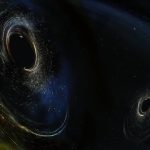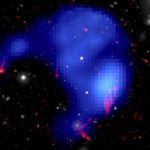Key Takeaways:
- The research, conducted by a British team at Heriot-Watt University, puts to the test a theoretical physics question known as “Wigner’s friend.”
- The experiment suggests that two contradicting realities can coexist until a measurement is made.
- This challenges the idea of an objective reality and could change how we understand physics.
- The findings require further research but could force physicists to rewrite the stories of quantum mechanics.
- Quantum mechanics explains the world at a microscopic level where classical physics doesn’t apply.
A recent study suggests that, at least in the quantum world, two versions of reality can coexist. Researchers have tested a theoretical physics question that was posed as a simple thought experiment decades ago.
Within the concept, two imaginary scientists are both deemed to be correct, despite arriving at totally different conclusions. It implies that there is no such thing as objective reality and raises fundamental questions about physics if this is proven in practice.
A British team at Heriot-Watt University published the findings on arXiv, a website for research that has not yet undergone full peer review.
They set out to explore “Wigner’s friend”, named after Nobel prize-winning physicist Eugene Wigner who came up with it 1961, which is based on the idea that a photon, or a particle of light, can exist in two possible states.
This “superposition” indicates that the photon’s polarisation, or the axis around which it spins, is simultaneously vertical and horizontal, in accordance with the laws of quantum mechanics. But when a single scientist measures a photon in a remote lab, they discover that the photon’s polarization is fixed at either vertical or horizontal.
In the meantime, the unmeasured photon remains in a state of superposition for an observer outside the lab who does not know the outcome.
Despite these apparently conflicting realities, both are correct. In their new study, the physicists were able to bring this experiment into reality, using real photons and measuring equipment that stood in for Wigner and his “friend”. They were able to verify the validity of Wigner’s two realities based on their findings.
Study co-author Dr. Martin Ringbauer told Live Science, “You can verify both of them,” clarifying how this perplexing idea could become a reality. “Theoretical advances were needed to formulate the problem in a way that is testable,” he said. “Then, to implement something like that, the experimental side needed developments on the control of quantum systems.”
The experiment and its findings raise serious and unsettling questions for physicists about the nature of reality, even though they may appear to be a world or even a universe apart from ordinary life.
The team said in their paper that “the scientific method relies on facts, established through repeated measurements and agreed upon universally, independently of who observed them.”
The purpose of quantum mechanics is to explain the world at a scale at which standard physics does not hold true. This could alter the way the discipline works if measurements from this field are not considered absolute.
“It seems that, in contrast to classical physics, measurement results cannot be considered absolute truth but must be understood relative to the observer who performed the measurement,” said Dr Ringbauer.
“That means that the stories we tell about quantum mechanics have to change.”


